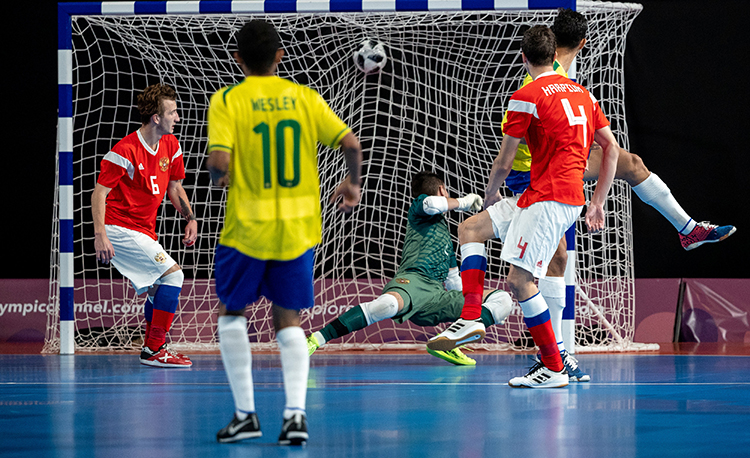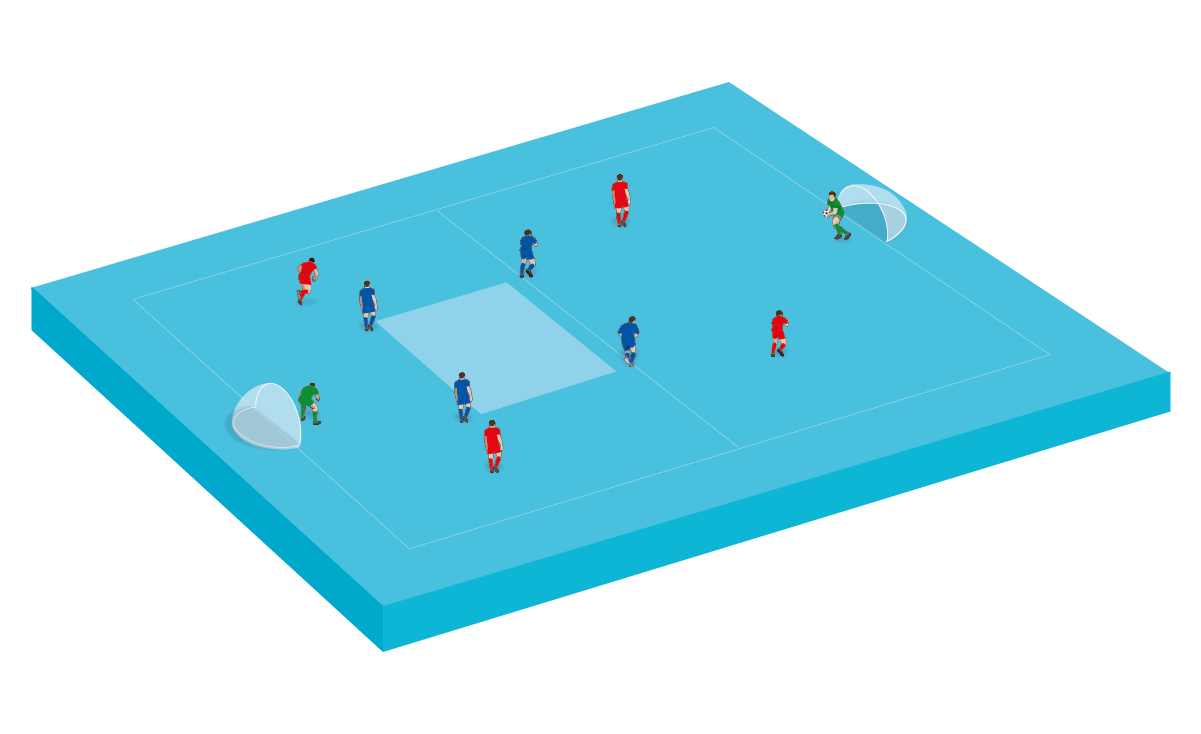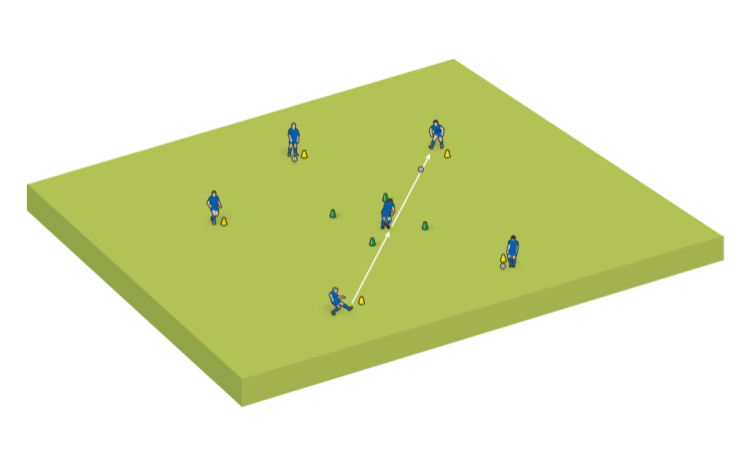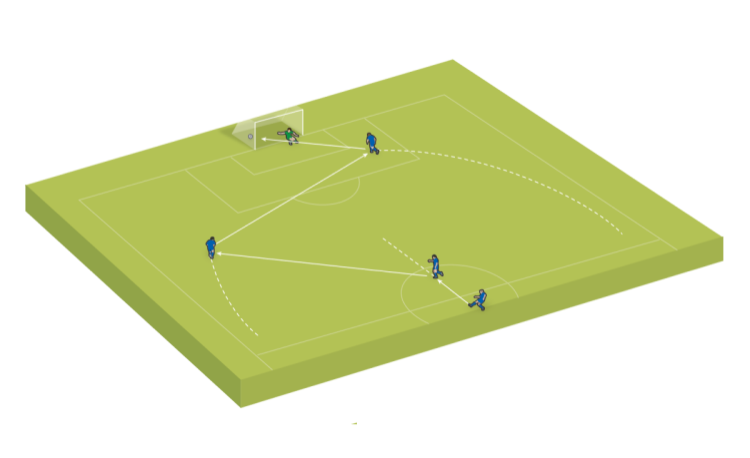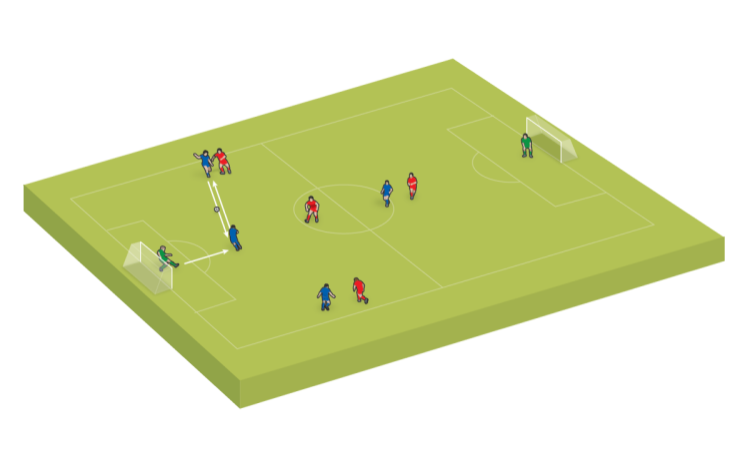Futsal: formations and transferable skills
A look at how futsal benefits soccer players and the variety of formations used in the sport
“In futsal you need to think quick and play quick, so it’s easier for you when you move to soccer.”
Pele
There are 211 Fifa member associations, of which 158 have national futsal teams.
Among the leading countries are Brazil, Spain, Argentina and Portugal and it is no coincidence that they are also among the top soccer nations, too.
Some of the world’s best soccer players cite futsal as one of the reasons for their success. Players like Ronaldo, Andres Iniesta, Neymar, Cristiano Ronaldo, Lionel Messi, Pele and Ronaldinho all claim to have spent some of their formative years on the futsal court.
They highlight how the game helped them to think faster, react faster and play faster. This is because players are always under pressure, working in tight spaces and having to adapt to quickly changing situations.
Even elite goalkeepers who have played futsal are easily identifiable, in that they are excellent with their feet and are happy to play out from the back.
They also create a huge frame in 1v1s, staying upright for longer, performing split saves, K-saves and block saves.
Ederson, Alisson and David De Gea are all examples of goalkeepers who played the game in their early career and are among the very best at blocking shots at close range with their upper body and feet.
"Futsal helps soccer players think and act faster and be more technically proficient..."
Transferrable skills to Soccer
There are many who believe that playing futsal benefits soccer players. These converts to the sport say it will help 11-a-side players think faster, act faster and become more technically proficient.
But, aside from knowing that many of the best players began their journeys in futsal, how can we know for sure this is the case?
In 2016, leading researcher Luca Oppici produced a report called ‘Transfer of Skills From Futsal to Football in Youth Players’, in which he took groups of soccer and futsal players and carried out a number of tests.
The first saw each group playing their own sport and the second had futsal players playing soccer and vice versa.
It was found that when the futsal players played soccer they still demonstrated marginally faster reception time - the time players had to receive the ball from their teammate’s pass - and they performed, on average, six more technical actions per minute more than the soccer players.
The futsal players also showed faster and more accurate passing execution in both games, and they gazed less at the ball when receiving, meaning they looked more at other players and the space around them.
1-4-0, 1-3-1 and 1-2-2 - three primary futsal formations
Just like in soccer, there are a variety of formations in futsal.
In possession, coaches will usually choose between three different shapes. In a 1-4-0 formation, the players line up in a bowl shape, with the wide players playing higher up the court than the two central players.
In the 1-3-1 three players start in deeper roles, with one player - known usually as the pivot - playing much higher up the court.
Finally, in the 1-2-2 set-up, two players play in a deep role and two players play higher up the court.
Teams can also play with a ‘fly goalkeeper’. Most teams will only do this if they are losing and need the extra outfield player to create overloads - or they may use it if they are winning and want to retain the ball.
Out of possession, teams can opt for a few different formations and strategies, such as the full press, where the key is to spot triggers like a bad touch or a slow pass and then pressing hard as a team.
The half-court press is where the opposition are allowed to have the ball in their own half, but once they enter your half, a full player-to-player press is executed.
The practice example on page 5 is set up for a team working in a 1-1-2-1 formation and a low block, which is used to force the team in possession to go around and not through, making them shoot from a much wider angle.
Related Files
It was hypothesised that futsal players develop more efficient perceptual and decision-making skills than soccer players, and that these skills are transferrable from futsal to soccer.
Of course, this was one study and there are some high-level soccer players who have never played futsal.
However, when you consider some of the players mentioned in this article, the study above and the fact so many top soccer clubs are now using futsal as a developmental tool, it is clear that the game complements its bigger sister in many ways, and that younger players in particular would benefit from playing both sports, at least until specialism becomes a requirement.
Although there are some key differences between futsal and soccer, there are also many similarities - and some of those occur more often within futsal and at a much higher level of intensity.
Therefore we should look at futsal as being an effective tool we can use in player development, specifically around actions such as receiving the ball under pressure and scanning.
In particular this could happen during the time of the year when the environment dictates that training would be more effective inside rather than outside.
By carefully planning the training curriculum, we can make sure that we focus on these areas of the game when it would be beneficial to transfer training to an inside facility such as a sports hall.
Newsletter Sign Up
Coaches Testimonials

Gerald Kearney, Downtown Las Vegas Soccer Club

Paul Butler, Florida, USA

Rick Shields, Springboro, USA

Tony Green, Pierrefonds Titans, Quebec, Canada
Subscribe Today
Discover the simple way to become a more effective, more successful soccer coach
In a recent survey 89% of subscribers said Soccer Coach Weekly makes them more confident, 91% said Soccer Coach Weekly makes them a more effective coach and 93% said Soccer Coach Weekly makes them more inspired.
*includes 3 coaching manuals
Get Weekly Inspiration
All the latest techniques and approaches
Soccer Coach Weekly offers proven and easy to use soccer drills, coaching sessions, practice plans, small-sided games, warm-ups, training tips and advice.
We've been at the cutting edge of soccer coaching since we launched in 2007, creating resources for the grassroots youth coach, following best practice from around the world and insights from the professional game.

